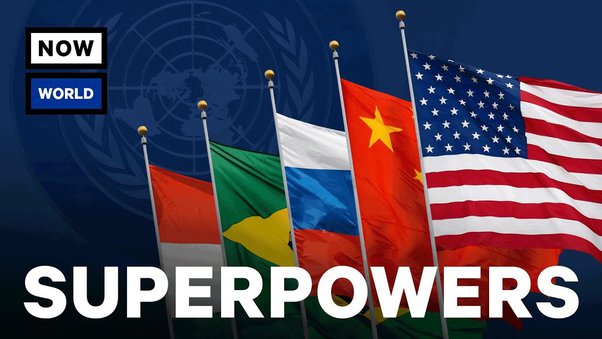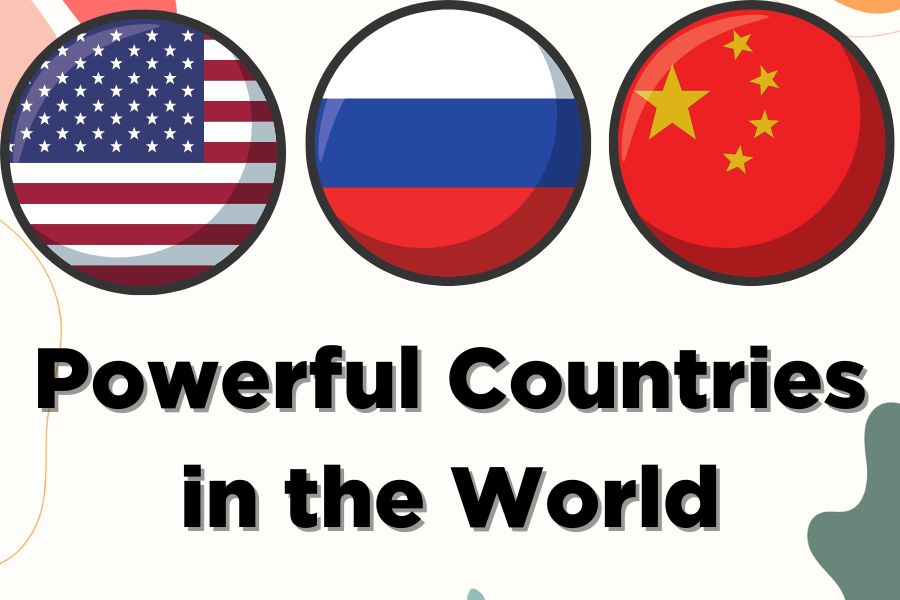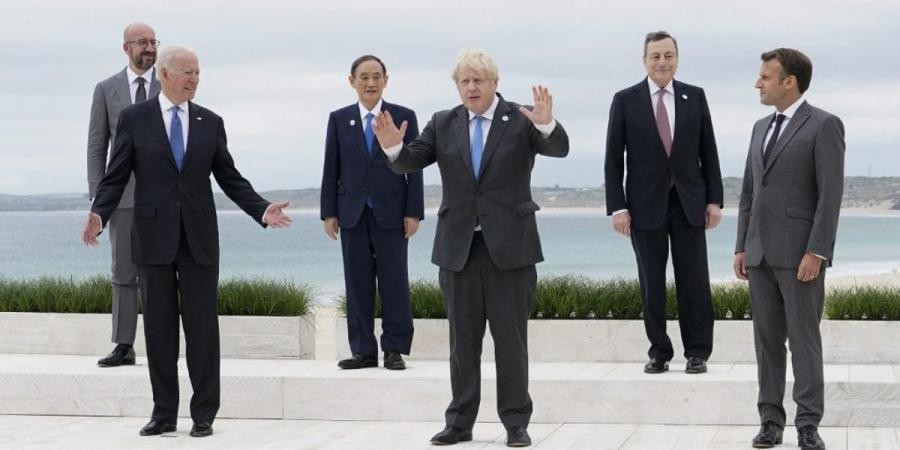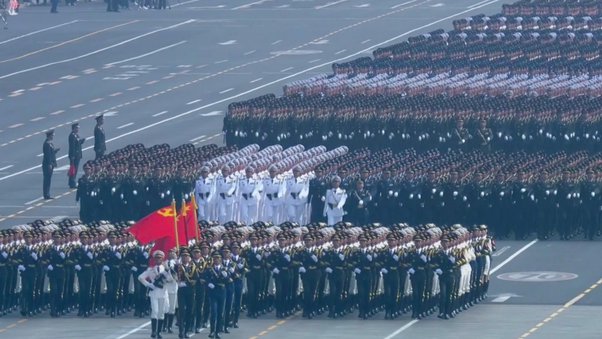Big 5 Superpowers: An Analysis of the World’s Most Influential Nations
Introduction
In the intricate tapestry of geopolitics, the term “superpower” is reserved for nations that wield significant influence on the global stage, both politically and economically. These nations possess formidable military capabilities, exert considerable soft power, and often shape international agendas. Among the plethora of nations across the globe, five stand out as the primary superpowers: the United States, China, Russia, the European Union (EU), and India. Each of these nations possesses unique strengths, challenges, and ambitions that shape global affairs in distinct ways. This essay delves into the characteristics, policies, and impact of these Big 5 superpowers, examining their roles in shaping the contemporary world order.
The United States
The United States, often hailed as the world’s sole superpower since the end of the Cold War, boasts unparalleled military prowess, a dynamic economy, and extensive cultural influence. Its military budget dwarfs that of any other nation, enabling it to maintain military bases worldwide and project power across the globe. Economically, the U.S. is the largest single-country economy, driven by innovation, entrepreneurship, and a robust consumer market. The dollar’s status as the primary global reserve currency further solidifies its economic influence.
Politically, the United States has played a central role in shaping international institutions and alliances, such as NATO, the United Nations, and various trade agreements. However, its foreign policy approach has been subject to fluctuations, ranging from interventionist tendencies to periods of isolationism. Domestically, the U.S. grapples with socio-political challenges, including racial tensions, economic inequality, and partisan polarization, which sometimes hinder its ability to pursue cohesive foreign policy objectives.
China
In recent decades, China has emerged as a formidable contender for global superpower status, leveraging its rapid economic growth, technological advancements, and assertive foreign policy. With the world’s largest population and second-largest economy, China has become an indispensable player in the global economy, driving manufacturing, trade, and investment on a massive scale. The Chinese government’s strategic initiatives, such as the Belt and Road Initiative (BRI), aim to expand its economic reach and geopolitical influence across Asia, Africa, and beyond.
Militarily, China has modernized its armed forces and invested heavily in advanced weaponry, challenging the traditional dominance of Western powers in Asia-Pacific security dynamics. Moreover, its assertiveness in territorial disputes, particularly in the South China Sea, has raised concerns among neighboring countries and drawn the attention of the United States and its allies. Despite its economic and military prowess, China faces internal challenges, including socio-economic disparities, environmental degradation, and political censorship, which could potentially impede its long-term ambitions.
Russia
Once a dominant superpower as part of the Soviet Union, Russia retains significant influence on the global stage, albeit in a different geopolitical context. Rich in natural resources, particularly energy, Russia wields economic leverage over its neighbors and Europe, supplying a substantial portion of their energy needs. Additionally, Russia possesses a formidable nuclear arsenal, maintaining its status as one of the world’s nuclear superpowers.
Under the leadership of Vladimir Putin, Russia has pursued a assertive foreign policy, challenging Western interests in regions such as Eastern Europe, the Middle East, and cyberspace. The annexation of Crimea in 2014 and military intervention in Syria underscore Russia’s willingness to assert its power and protect its perceived strategic interests, often at the expense of strained relations with the West. Internally, Russia faces socio-economic challenges, including corruption, demographic decline, and restrictions on political freedoms, which pose long-term obstacles to its stability and development.
European Union
The European Union, comprising 27 member states (as of 2021), stands as a unique superpower characterized by economic integration, political cooperation, and soft power diplomacy. Collectively, the EU boasts the world’s largest single market and a high standard of living for its citizens. Its common currency, the euro, facilitates trade and investment among member states, bolstering the EU’s economic clout on the global stage.
Politically, the EU promotes multilateralism, human rights, and democratic values through its institutions, such as the European Parliament and the European Commission. It has played a pivotal role in mediating conflicts, promoting sustainable development, and combating climate change worldwide. However, the EU’s unity and cohesion have been tested by various challenges, including the Eurozone crisis, Brexit, and migration pressures, which have exposed underlying tensions and divisions among member states.
India
India, with its vast population, diverse culture, and rapidly growing economy, has emerged as a key player in shaping the dynamics of global politics and economics. As the world’s largest democracy, India exerts soft power through its vibrant cultural heritage, Bollywood film industry, and contributions to literature, science, and technology. Economically, India’s youthful population and burgeoning middle class present immense opportunities for growth and investment, positioning it as a significant market and economic powerhouse in the 21st century.
Militarily, India maintains one of the world’s largest standing armies and possesses nuclear capabilities, underscoring its strategic importance in South Asia and beyond. Geopolitically, India seeks to balance its relations with major powers while asserting its regional influence, particularly in South Asia and the Indian Ocean region. However, India faces formidable challenges, including poverty, infrastructure deficits, religious and ethnic tensions, and geopolitical rivalries with neighboring Pakistan and China, which constrain its ability to fully realize its potential as a global superpower.
The Big 5 superpowers—United States, China, Russia, European Union, and India—each wield significant influence on the global stage, albeit in different ways. While the U.S. remains the preeminent military and economic superpower, China’s rise as an economic powerhouse and assertive player in international affairs challenges the existing world order. Russia retains formidable military capabilities and asserts its influence through strategic interventions in various regions.
The European Union, despite internal challenges, stands as a beacon of economic integration and multilateral cooperation. Finally, India’s dynamic economy, democratic values, and strategic positioning make it a rising power with immense potential. Understanding the complexities and nuances of these Big 5 superpowers is essential for navigating the evolving landscape of global politics and ensuring peace, stability, and prosperity in the 21st century.
Cooperation and Competition
Despite their unique strengths and ambitions, the Big 5 superpowers also engage in cooperation and competition with each other, shaping the global geopolitical landscape in complex ways. The United States and China, for instance, are engaged in a multifaceted relationship characterized by economic interdependence, strategic competition, and ideological differences. While both nations collaborate on certain issues such as climate change and global health, they also compete for influence in areas such as trade, technology, and regional security.
Similarly, Russia’s relations with the United States and the European Union oscillate between cooperation and confrontation, depending on strategic interests and geopolitical considerations. Russia’s annexation of Crimea and intervention in Syria have strained its relations with the West, leading to economic sanctions and diplomatic isolation. However, Russia also cooperates with Western powers on issues such as arms control, counterterrorism, and space exploration.
The European Union, while primarily focused on internal integration and cohesion, also engages in external relations with other superpowers, seeking to promote its values and interests on the global stage. The EU’s economic and diplomatic clout allows it to influence international norms and standards, particularly in areas such as trade, climate change, and human rights. However, the EU’s ability to speak with a unified voice on foreign policy matters remains limited by the divergent interests and priorities of its member states.
India, as a rising power, seeks to balance its relations with major superpowers while asserting its regional influence and autonomy. India’s strategic partnerships with the United States, Russia, and other countries serve its economic and security interests while maintaining a degree of strategic autonomy. However, India also faces challenges in managing its relations with neighboring powers such as China and Pakistan, which often impede its aspirations for regional stability and development.
Global Challenges and Responses
In an increasingly interconnected world, the Big 5 superpowers are confronted with a myriad of global challenges that require collective action and cooperation. Issues such as climate change, pandemics, terrorism, nuclear proliferation, and cyber threats transcend national borders and necessitate multilateral solutions. The United States, China, Russia, European Union, and India all have a stake in addressing these challenges, albeit with varying degrees of commitment and capacity.
Climate change, in particular, has emerged as a pressing existential threat that requires concerted efforts from all superpowers to mitigate its impact and transition towards sustainable energy systems. While the United States has rejoined the Paris Agreement under the Biden administration, China has pledged to achieve carbon neutrality by 2060, signaling a willingness to prioritize environmental concerns. Russia, the European Union, and India have also committed to reducing their carbon emissions and investing in renewable energy technologies to combat climate change.
Pandemics such as COVID-19 have highlighted the importance of global health security and the need for coordinated responses to emerging infectious diseases. The United States, China, and the European Union have played leading roles in vaccine development, production, and distribution efforts, albeit with varying degrees of vaccine diplomacy and geopolitical considerations. Russia and India have also contributed to global vaccination efforts, underscoring the importance of international cooperation in combating pandemics.
Terrorism and nuclear proliferation remain persistent threats to global peace and security, requiring vigilance and cooperation among superpowers to prevent terrorist attacks and nuclear conflicts. The United States, China, Russia, European Union, and India all have a stake in preventing the spread of weapons of mass destruction and countering terrorist organizations such as ISIS and al-Qaeda. While there may be differences in approaches and priorities, concerted efforts are needed to address these transnational security challenges effectively.
Emerging Trends and Future Scenarios
Looking ahead, several emerging trends and potential scenarios may reshape the dynamics of the Big 5 superpowers and their interactions in the global arena.
Firstly, technological innovation and digitalization are likely to have profound implications for the power dynamics among superpowers. Advancements in artificial intelligence, quantum computing, and biotechnology could redefine economic competitiveness, military capabilities, and societal norms. Superpowers that lead in technological innovation may gain significant advantages in areas such as defense, healthcare, and economic productivity, thereby shaping the balance of power in the 21st century.
Secondly, demographic shifts and socio-economic transformations could alter the geopolitical landscape, particularly in the context of aging populations, urbanization, and inequality. Superpowers with youthful and dynamic populations, such as India and some African countries, may experience demographic dividends and economic growth, while aging societies in Europe, Russia, and parts of East Asia may face challenges related to labor shortages, healthcare costs, and social welfare systems.
Thirdly, environmental degradation and resource scarcity may exacerbate competition among superpowers for access to water, energy, and arable land, leading to conflicts and geopolitical tensions. Climate change-induced natural disasters, such as floods, droughts, and wildfires, could exacerbate humanitarian crises and trigger mass migrations, straining global governance mechanisms and testing the resilience of superpowers’ infrastructures and institutions.
Fourthly, shifts in geopolitical alliances and regional dynamics could reshape the balance of power and influence among superpowers. Emerging powers such as Brazil, Indonesia, and Nigeria may challenge the dominance of traditional superpowers in their respective regions, forging new alliances and partnerships based on shared interests and values. Regional conflicts and instability, particularly in the Middle East, South Asia, and Africa, could draw superpowers into proxy wars and humanitarian interventions, complicating efforts to maintain global peace and security.
Lastly, the rise of non-state actors and transnational movements, including multinational corporations, civil society organizations, and cybercriminal networks, may disrupt traditional power structures and governance models, challenging the authority and legitimacy of superpowers.
The proliferation of information and communication technologies enables individuals and groups to mobilize and coordinate actions on a global scale, bypassing state controls and surveillance mechanisms. Superpowers must adapt to these evolving dynamics by fostering inclusive governance, promoting digital literacy, and strengthening international cooperation to address emerging threats and opportunities.
Strategic Responses and Policy Implications
To effectively navigate the evolving landscape of global politics and maintain their positions as superpowers, the Big 5 nations must adopt strategic responses and policy implications tailored to their unique strengths, challenges, and aspirations.
The United States, as the incumbent superpower, should prioritize revitalizing its alliances and partnerships, particularly with like-minded democracies in Europe and Asia, to counterbalance China’s rise and assertive behavior. Investing in advanced technologies, such as artificial intelligence, quantum computing, and renewable energy, will enhance U.S. competitiveness and resilience in the face of emerging challenges. Moreover, the U.S. should strengthen its commitment to multilateralism, global governance, and human rights, reaffirming its leadership role in addressing transnational issues and promoting a rules-based international order.
China, as a rising superpower, faces the dual challenge of sustaining economic growth while addressing socio-economic disparities and environmental degradation. Embracing economic reforms, market liberalization, and innovation-driven development strategies will enhance China’s long-term competitiveness and sustainability.
Moreover, China should adopt a more transparent and responsible approach to international relations, respecting the sovereignty and territorial integrity of neighboring countries and abiding by international norms and rules. By fostering mutual trust and cooperation with other superpowers, China can contribute to a more stable and prosperous world order.
Russia, despite its diminished superpower status, retains significant influence in key regions such as Eastern Europe, the Middle East, and Central Asia. To enhance its strategic resilience and relevance, Russia should diversify its economy away from reliance on energy exports and invest in high-tech industries and human capital.
Moreover, Russia should pursue pragmatic and constructive engagement with Western powers, seeking areas of mutual interest and cooperation while addressing differences through dialogue and diplomacy. By contributing to regional stability and conflict resolution, Russia can play a constructive role in shaping the post-Cold War order.
The European Union, as a collective superpower, must address internal divisions and external challenges to maintain its unity and relevance on the global stage. Strengthening the eurozone, deepening economic integration, and promoting sustainable development will enhance the EU’s resilience and competitiveness in the face of global uncertainties.
Moreover, the EU should assert its values and interests in foreign policy, championing democracy, human rights, and multilateralism while engaging with other superpowers on shared challenges such as climate change, migration, and security. By leveraging its economic and diplomatic clout, the EU can shape global norms and standards and contribute to a more just and inclusive world order.
India, as a rising superpower, must navigate complex regional dynamics, geopolitical rivalries, and internal challenges to realize its full potential on the global stage. Investing in infrastructure, education, and healthcare will enhance India’s human capital and economic competitiveness, driving inclusive growth and development.
Moreover, India should pursue a balanced and pragmatic foreign policy, diversifying its strategic partnerships while safeguarding its sovereignty and national interests. By promoting regional stability, connectivity, and economic integration, India can emerge as a leading voice for the Global South and contribute to a more multipolar and equitable world order.
Conclusion
In conclusion, the Big 5 superpowers—United States, China, Russia, European Union, and India—must adapt to changing realities and emerging challenges to maintain their positions of influence in the global arena. By embracing innovation, cooperation, and inclusive development, these nations can contribute to building a more stable, prosperous, and sustainable world for future generations. Through strategic responses and policy implications tailored to their unique contexts and aspirations, the Big 5 superpowers can shape the contours of global politics and ensure peace, security, and prosperity in the 21st century and beyond.




